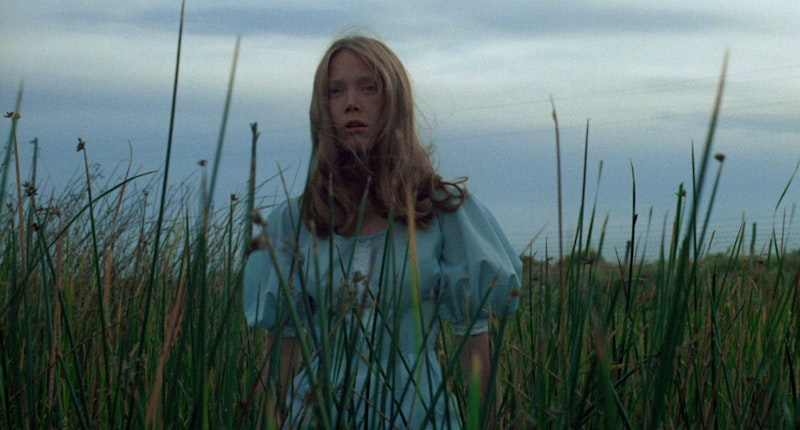They were making their way across the prairie, off road, cutting through the brush. They’d been on the run for I-don’t-know-how-long-now, but Kit’s cool detachment was holding as steady as Holly’s teenage daydreams. They might be murderers on a cross-country killing spree, but it feels like a fairy tale or a gossip magazine. It’s the strange charm of Terrence Malick’s debut Badlands, which is probably still his most unique feature. It simultaneously sets the tone for his naturalistic fantasies, while having a childlike whimsy that gets lost in his more outright philosophical ponderings that have come to define his narrative cinema. Here lies the seeds of a master who seemingly returned from nowhere after 20 years away from Hollywood, one who people often forget has a penchant for romance.
The enigmatic career of Malick wasn’t so enigmatic in the 1970s. Instead he was another of a wave of young artists coming out of the emerging world of film school—a new generation of filmmakers trained at USC, NYU, and, in Malick’s case, the American Film Institute. He was a part of that legendary first class that included Caleb Deschanel, Paul Schrader, and David Lynch, whose childhood best friend, Jack Fisk, would soon become one of Malick’s lifelong collaborators. Fisk is probably the only production designer in America who’s become a household name in the industry. His spaces are lived in, whether that’s the delicate details of the panhandle mansion in Days of Heaven or the fortified colony built as they were filming in The New World, they always have a specific sense of place that the actors get to run their fantasies in.
Malick is often talked about as having a sense of poetic realism, which for some can be dissociative as it looks like the characters’ dramatic wanderings are out of place in the real world they inhabit. I’d argue that’s part of the beauty of Malick’s films. Where people might criticize Bresson’s films for their statuesque acting, Malick’s characters could be criticized for being too in motion. They’re extraordinarily expressive, not through melodrama but by expressing their interior lives like dancers, flowing through the environment like rivers of emotion. Badlands is by far the most restrained of his works here, but Martin Sheen’s constant fidgeting and search for interaction are reminiscent of James Dean as much as they are predictive of Malick’s late-style. But it’s through Holly’s eyes that we see our lovers-on-the-run story, a killing spree narrated with a brilliant casualness by Sissy Spacek.
Badlands doesn’t have the sheer brutality of Malick’s mentor (the great hack of New Hollywood) Arthur Penn or the Starkweather murders it's based on, but instead an attitude of disaffected romance. The murder of Holly’s father is narrated as plainly as a first kiss; it's a strange dream of an affair that sounds like a series of diary entries but looks like a realist drama. Malick’s films are made up of the interplay of the subjective and objective—the dualism between the internal monologue and the external world the people exist in. His landscapes are completely real, and his voices are ethereal, one’s realism grounds while the other’s contemplation heightens.
I think a lot about one of Holly’s narrations in the middle of the film: “We could make out the gas fires of the refinery at Missoula, while to the south we could see the lights of Cheyenne, a city bigger and grander than I'd ever seen.“ There’s no way to be looking at Missoula and Cheyenne from the same place on earth. And if you were to plop in the middle of a highway drive between them you’d be in Billings, the largest city for over 500 miles in any direction, not the middle of the badlands of eastern Montana. Of course, none of it’s shot there either. The movie was filmed in eastern Colorado as a stand-in for those more northerly parts of the High Plains. It adds to the fantasy. While the world looks closer to life, it’s a mythic West in the same way that Ford’s is, a place outside of time and as far away from everyday life as the stories from Kon-Tiki that Holly reads to Kit in their treehouse hideout where they build their own life away from everyone else. It puts their journey on a road to nowhere, not unlike Kelly Reichardt’s Badlands-ian debut some 20 years later, River of Grass (before her own hiatus from film, albeit hers less by choice). Few films have ever felt as much like a dream.

